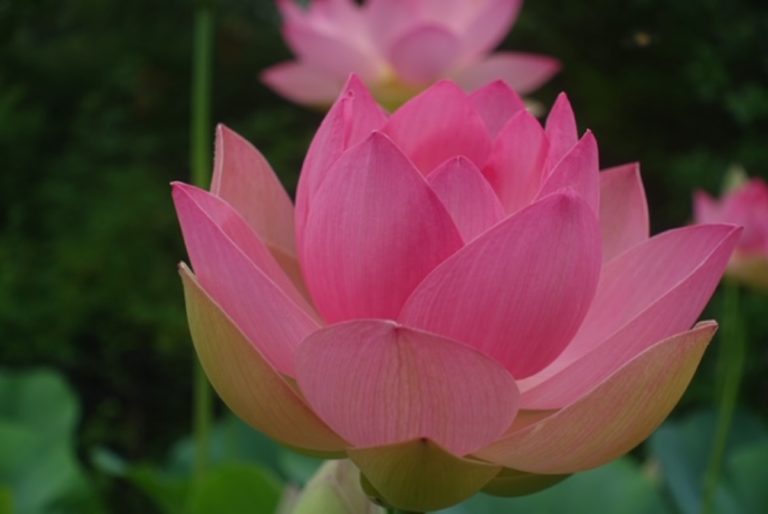757th Week: Coming Back to Grounding
Recently, I participated in a conversation in front of a large group of people where a colleague and I discussed intersections between Somatic Experiencing® and other body-based approaches and Buddhist practices and concepts. What became the underlying theme for me was to convey to the audience that when we feel activated—under threat or overwhelmed—our perception narrows and we lose sight of the bigger picture. We can see this dynamic all around us at this time, where people on every side of an issue become locked into their perspective and are seemingly unable to take in new information that would widen their understanding of a given stance or situation. Also, we lose sight of all the good that’s happening in the world when we’re overwhelmed by activation.
The discussion went on to underscore the importance of being aware of our own particular activation signals and behaviors, and how essential it is to be able to manage ourselves and bring ourselves back into regulation when we notice that we are activated. I spent some time talking about the difference between the “trauma brain” and the “present-day brain”. The “trauma brain” operates within an either/or, lack-of-options framework, so when we’re activated, it’s difficult to see possibilities that weren’t initially obvious. The “present-day brain” operates within a framework of both/and, along with an ability to imagine a range of options.
Then, there’s the impact of our collective activation during a time of intense stress and suffering within our global human family. When we are afraid, angry, or overwhelmed, our own feelings are magnified by the intensity of the collective fear, anger, and overwhelm that is part of our “environment of consciousness”.
For this week’s practice, I’d like to offer some grounding options that can help bring you back into your “present-day brain”, and out of the “trauma brain”. It’s helpful to remember that the “trauma brain” is only doing its job, which is to ensure your survival no matter what. The problem is that the brain doesn’t necessarily operate from accurate information. It fills in the blanks with whatever seems to fit, even when what fits has nothing to do with what’s really happening.
Here are a few grounding exercises to help orient your awareness to move away from activation into a more settled state:
One of my favorites is Tonglen, which I wrote about in a practice recently, as well as HeartMath, which I’ve also mentioned a number of times. Here are some others:
Remembering to bring awareness to the lower half of the body, and to legs and feet
Activation travels up the body as we constrict. It can be helpful to get in a habit of feeling into your pelvis, legs, and feet when you want to become more settled and grounded.
Orienting
When we orient, we bring ourselves into a more active and conscious present-moment awareness.
To do an orienting exercise, simply look around you and allow your eyes to see what attracts them, your ears to hear the sounds that are around you, your nose to take in the smells or fragrances in your environment, and your fingers to touch the surfaces of what’s right around you.
Allow your neck to gently move as you look at your environment, as the neck muscles are part of the orienting response.
Not adding logs to the fire
In the exercise we call “not adding logs to the fire”, you are invited to notice a distressing or emotionally-laden thought and allow it to move on through without adding anything to it—which means, notice tension and invite yourself to soften; notice the story you want to tell yourself about what happened and stop yourself from doing that.
It’s a matter of becoming aware of how you feed your distress and then noticing what it’s like not to allow yourself to do that.
It can be surprising how quickly upset can move through when it’s not fed.
Learning to distinguish between thoughts that bring useful information and thoughts that represent, and are symptoms of, activation
Most of our thoughts don’t really bring us useful information. All too often, they are symptoms of activation and end up adding “logs to the fire”.
When you become aware of activation thoughts, practice allowing them to arise, move through, and move on—basically ignoring them as bringers of information.
This is a process of learning not to be captured nor captivated by the stories we tell ourselves.
As with all these practices, please remember to bring along curiosity as your constant companion. Curiosity is a non-trauma-state awareness. When we are under threat, curiosity disappears, so it’s helpful to actively cultivate it. Also, please remember to pat gently on the head any judgments that may arise as you move through these grounding options. A good rule of thumb may well be that judgments are more likely signals of activation rather than helpful and useful information.




Loving and loving article. Thanks.
Thanks, Nick.